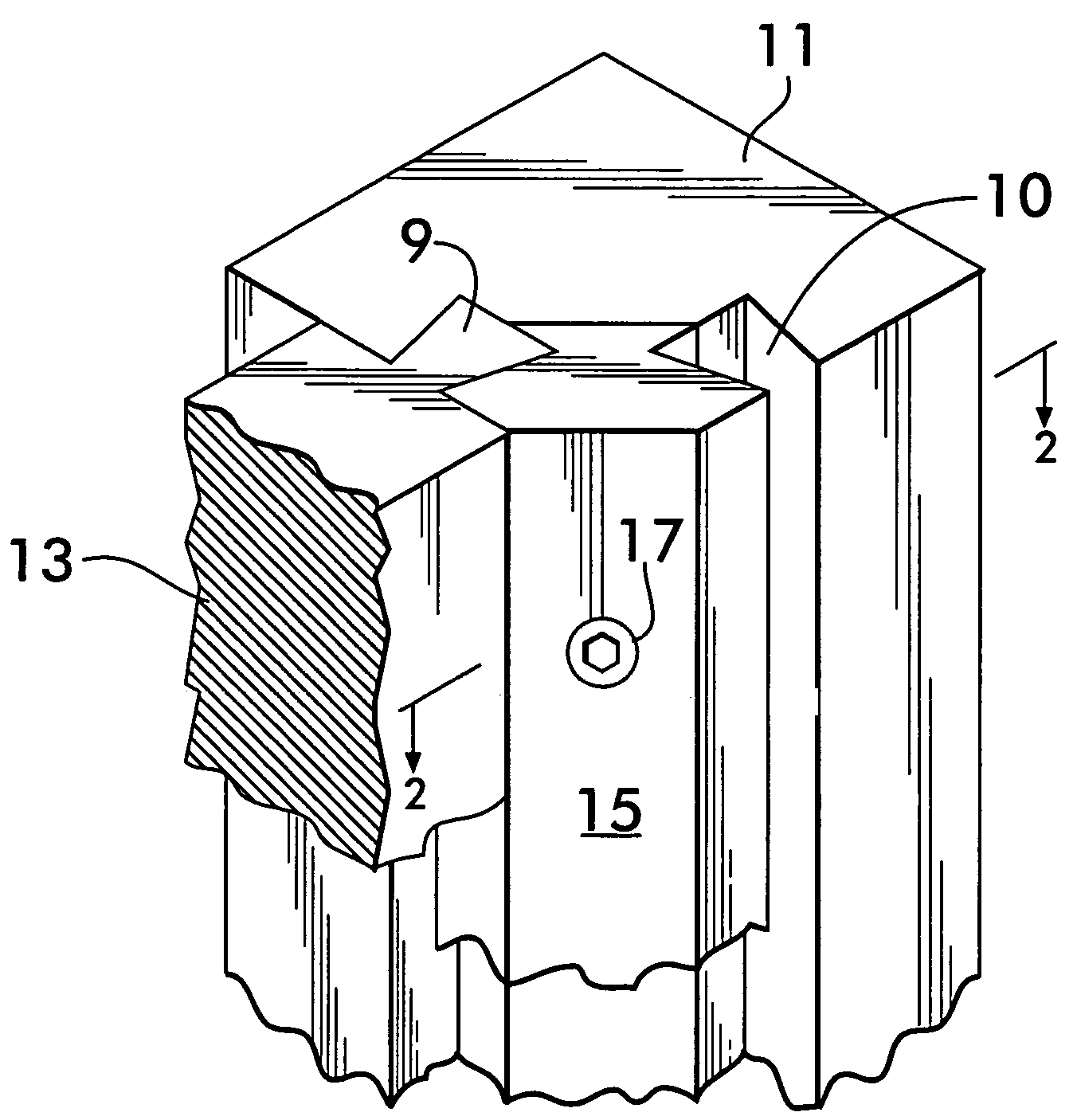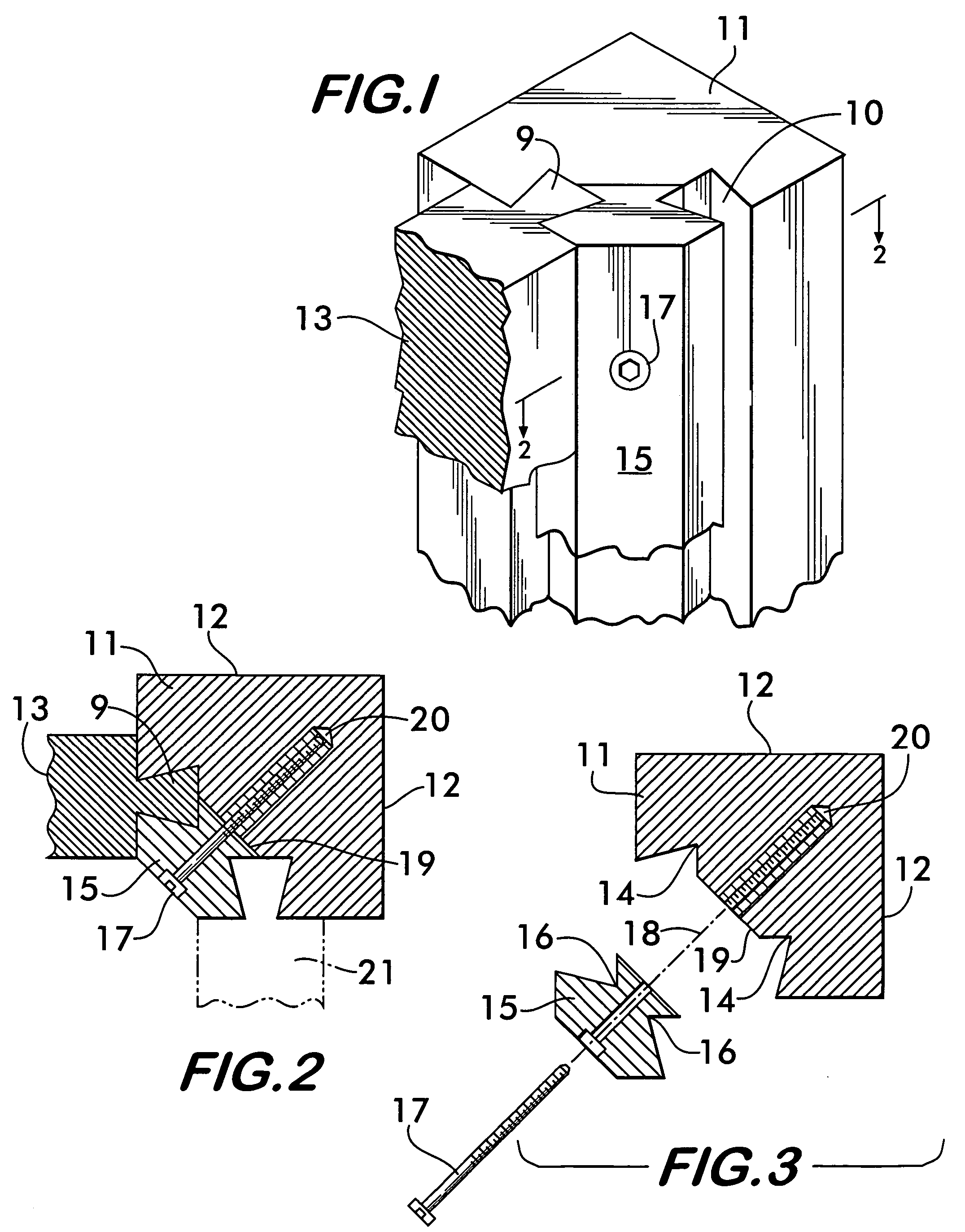Releasable dovetail corner joint
a dovetail and corner joint technology, applied in the field of wooden construction joints, can solve the problems of reducing affecting the structural integrity of the joint, and the components being somewhat loosely fitting, so as to facilitate the adjustment or the assembly of parts, and increase the joint space
- Summary
- Abstract
- Description
- Claims
- Application Information
AI Technical Summary
Benefits of technology
Problems solved by technology
Method used
Image
Examples
Embodiment Construction
[0012]The invention comprises an assembly of parts for a corner joint for applications including but not limited to furniture and cabinetry. The elements of the assembly may be composed of wood or metal such as extruded aluminum. While the corner joint described in the preferred embodiment includes outside surfaces which are perpendicular, it should be understood that outside angles other than 90 degrees may be employed.
[0013]Referring now to FIG. 1, the invention provides a corner leg 11 with a clamping block 15 which is secured thereto by a fastener 17. As will be described further herein, grooves in the clamping block and in the corner leg are so configured and aligned such that two perpendicularly oriented female dovetail grooves such as groove 10 are formed between them. This enables a structure such as a rail or panel 13 having a male dovetail member 9 to be grasped and securely clamped between the clamping block 15 and the corner leg 11. Greater detail of this assembly of par...
PUM
 Login to View More
Login to View More Abstract
Description
Claims
Application Information
 Login to View More
Login to View More - R&D
- Intellectual Property
- Life Sciences
- Materials
- Tech Scout
- Unparalleled Data Quality
- Higher Quality Content
- 60% Fewer Hallucinations
Browse by: Latest US Patents, China's latest patents, Technical Efficacy Thesaurus, Application Domain, Technology Topic, Popular Technical Reports.
© 2025 PatSnap. All rights reserved.Legal|Privacy policy|Modern Slavery Act Transparency Statement|Sitemap|About US| Contact US: help@patsnap.com


